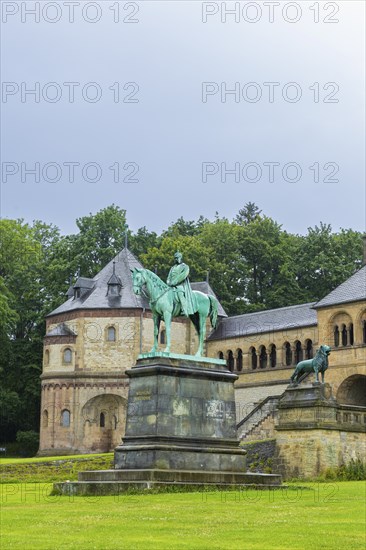
Légende
The imperial palace of Goslar covers an area of around 340 by 180 metres, situated at the foot of the Rammelsberg in the south of the town of Goslar, on which the imperial house, the former collegiate monastery St. Simon and Judas, the palace chapel of St. Ulrich and the Church of Our Lady are or were located. The imperial palace, built between 1040 and 1050 under Henry III, is a unique monument to secular architecture. For over 200 years, German and European history was written here at numerous imperial and court conventions. Copies of the Brunswick Lion and equestrian monuments in front of the imperial palace, Kaiserpfalz Goslar, Goslar, Lower Saxony, Germany, Europe
Date
11 juil. 2024
Crédit
Photo12/imageBROKER/Max Gaertner
Notre référence
BRK24E28_384
Model release
Non
Property release
Non
Licence
Droits gérés
Format disponible
68,7Mo (4,7Mo) / 33,9cm x 50,8cm / 4000 x 6000 (300dpi)